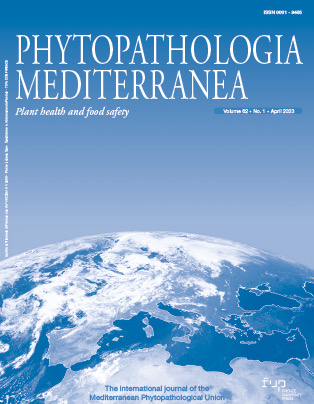Published 2023-04-06
Keywords
- blossom blight,
- soapy rot,
- Olive anthracnose,
- cultivar susceptibility
How to Cite
Copyright (c) 2023 Victoria MOREIRA, María Julia CARBONE, Pedro MONDINO, Sandra ALANIZ

This work is licensed under a Creative Commons Attribution 4.0 International License.
Abstract
Olive anthracnose, caused by Colletotrichum, is an important disease in olive-growing regions, with the most destructive symptoms being fruit rot and blossom blight. Susceptibility of fruit to Colletotrichum increases with maturity, but differences between cultivars and Colletotrichum species have been reported, still information on flower susceptibility during development is scarce. The susceptibility of the olive cultivars Arbequina, Coratina, Frantoio and Picual was evaluated during flower development and fruit maturity to Colletotrichum acutatum s.s., C. nymphaeae, C. fioriniae, C. theobromicola and C. alienum. Susceptibility to anthracnose begins in early stages during flower development and increases during blossoming. Flowers of Arbequina, Coratina and Picual were susceptible, whereas those of Frantoio were moderately susceptible. Green fruit developed less anthracnose than mature fruit. At the green fruit stage, Arbequina and Frantoio were the most susceptible, Coratina was intermediate, and Picual was moderately susceptible, while no differences were found among the cultivars at mature fruit stages. No mayor differences were found among the Colletotrichum species with exception of C. theobromicola, which caused greatest severity at the green fruit stage. Future research should focus on developing anthracnose management strategies to minimize the disease progress from early stages of flower development and fruit ripening, especially in the most susceptible olive cultivars.






